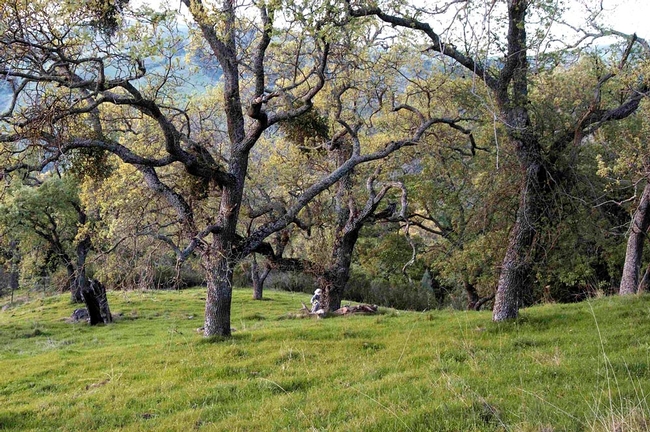One of the greatest assets of our State is no doubt the vastness and richness of our natural environment. Unfortunately, such vastness is constantly being eroded by both natural and human-induced events. Sudden Oak Death aka SOD is one of those environmental threats belonging to the second category, having been introduced in the latter part of last century from an unknown location outside of North America. Many of our tree species are susceptible to SOD and several oak species and tanoaks can be killed in large numbers: in the worst sites 70-100% of trees are dead.
Since its introduction, the disease has been spreading slowly but steadily and now it is present in 15 contiguous counties from Humboldt to Monterey: in about 15 years of research we have found several effective control measures, but these need to be applied before oaks are infected. Oaks become at risk exclusively if the disease is within 200 yards from them!! That is the good news.

For the past 9 years citizens like you have been helping, and this help has resulted in the identification of several new outbreaks and in the eradication of some of these outbreaks. If your county is not extensively colonized by the disease, your effort will allow to exactly pinpoint its current distribution. This means knowing where extra care is warranted to avoid further spreading SOD, and knowing where business and leisure can be enjoyed without risking further disease spread. The volunteer-generated database is the most complete database for a forest disease anywhere in the world, including almost 20.000 points.
If you join a SOD BLITZ you:
- Will spend one hour learning the basic biology of the disease and how to identify it in the field, making you an expert
- Receive all the necessary collection materials and instructions on how to sample. Note that sampling has to happen 1-2 days after the training
- Spend 1-4 hours on your own in a location of your choice (your property, business, favorite forest or campground) looking for disease symptoms and collecting symptomatic leaves
- The activity is enjoyed by adults and children, btw it is a great school project
- You will become officially a citizen scientist and your published disease distribution data will help save our oaks. All at no cost to you
- Tree care specialists attending the training can bring in clients' samples
The SOD Blitz is in the spring because that is the time when SOD symptoms are easiest to spot. You can join and then sample wherever you desire in coastal California.
Register here for this free event
Date of SOD Blitz: May 30th, 10-11 am
- Graton—Graton Community Club, Main and N. Edison, Graton, CA
- Santa Rosa—Spring Lake Park Environment Discovery Center, 393 Violetti Road Park Entrance, Santa Rosa, CA
- Cloverdale—Cloverdale Historical Society, 215 N. Cloverdale Blvd., Cloverdale, CA
Contact: Lisa Bell
Author: Matteo M. Garbelotto
